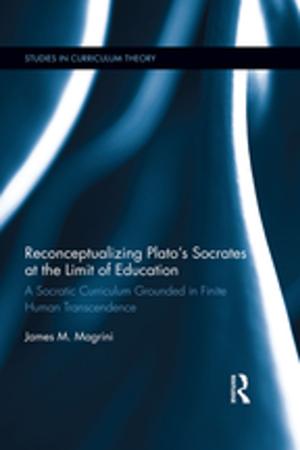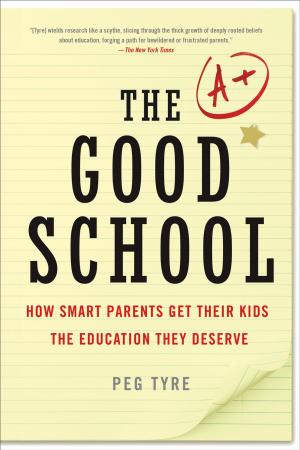Educational Planning (Idealism Tempered in Reality's Forge)
Nonfiction, Reference & Language, Education & Teaching, Educational Theory, Aims & Objectives| Author: | Douglas Patterson | ISBN: | 9781301796854 |
| Publisher: | Douglas Patterson | Publication: | April 1, 2013 |
| Imprint: | Smashwords Edition | Language: | English |
| Author: | Douglas Patterson |
| ISBN: | 9781301796854 |
| Publisher: | Douglas Patterson |
| Publication: | April 1, 2013 |
| Imprint: | Smashwords Edition |
| Language: | English |
Educational planning should be based on realistic assumptions concerning the children that enter our classrooms. We must recognize that they are a diverse group and that a one-size-fits-all approach in not going to work very well for many students. The notion that all children can live up to a single standard is so obviously at odds with human variability the one wonders how "No Child Left Behind" ever became the law of the land.
Nature treats some individuals much more kindly than others. Children at birth are not all equally strong or healthy or – presumably – intelligent; and those with superior natural endowments have a much greater chance of succeeding than do their less fortunate peers.
Nurture may diminish or increase the inequalities among those children who show up in our nation’s classrooms. If a child has been healthy and well-nourished and loved and well-educated during his preschool years, he may already be far ahead of the child sitting across the aisle who has enjoyed less favorable treatment.
A second assumption that has gained ground in recent years is that a student's behavior is the best available mirror for reflecting what he has learned. When teachers frame their goals and their activities in terms of student behaviors, they enhance everyone's understanding of what education is all about.
If a teacher runs an activity centered classroom, his students are probably going to learn more efficiently (and be less bored) than in classes where they are seldom asked to do anything other than to listen.
John Dewey’s belief that the schools must teach the whole child is just as valid today as when he advanced that belief a hundred year ago. Schools must be concerned with their students’ growth not only in the cognitive but in the affective and the psycho-motor domains as well.
Dewey’s emphasis on democratic schools in the minds of some was equated with permissive schools. Actually living in a democracy in no way implies living lawlessly. In fact, when teachers plan well-regulated activities for students, their classrooms become more self-disciplined environments than ones in which the “kids” merely listen to the teacher’s lectures.
The central purpose of student evaluation should not be to stack the deck but rather to measure each student’s progress. Not all children will ever run a mile in eight or even ten minutes; but we should be pleased to see that a child has improved his time – even if it is from 20 to l9 minutes.
As a teacher I became convinced that evaluation in the schools should be an open, continuous, collaborative process involving students, teachers, administrators and parents. Fortunately, digital technology has facilitated the information sharing process, so that all parties with a right and a need to know about a child’s progress can have immediate access to relevant information.
The two major deficiencies that I see in our schools today are these: (l) They hand out too many credits based on social promotions and not of accomplishment and (2) They do an inadequate job of teaching hard-headed critical thinking skills. Industry and healthy skepticism are two very important attributes of successful adults.
Even though our schools have come in for some pretty harsh criticism, in large part because of the unrealistic expectations engendered by “No Child Left Behind,” they actually do a very credible job in educating the country’s youth. A good many effective teachers and administrators will find the suggestions in this book in no way revolutionary or controversial.
Educational planning should be based on realistic assumptions concerning the children that enter our classrooms. We must recognize that they are a diverse group and that a one-size-fits-all approach in not going to work very well for many students. The notion that all children can live up to a single standard is so obviously at odds with human variability the one wonders how "No Child Left Behind" ever became the law of the land.
Nature treats some individuals much more kindly than others. Children at birth are not all equally strong or healthy or – presumably – intelligent; and those with superior natural endowments have a much greater chance of succeeding than do their less fortunate peers.
Nurture may diminish or increase the inequalities among those children who show up in our nation’s classrooms. If a child has been healthy and well-nourished and loved and well-educated during his preschool years, he may already be far ahead of the child sitting across the aisle who has enjoyed less favorable treatment.
A second assumption that has gained ground in recent years is that a student's behavior is the best available mirror for reflecting what he has learned. When teachers frame their goals and their activities in terms of student behaviors, they enhance everyone's understanding of what education is all about.
If a teacher runs an activity centered classroom, his students are probably going to learn more efficiently (and be less bored) than in classes where they are seldom asked to do anything other than to listen.
John Dewey’s belief that the schools must teach the whole child is just as valid today as when he advanced that belief a hundred year ago. Schools must be concerned with their students’ growth not only in the cognitive but in the affective and the psycho-motor domains as well.
Dewey’s emphasis on democratic schools in the minds of some was equated with permissive schools. Actually living in a democracy in no way implies living lawlessly. In fact, when teachers plan well-regulated activities for students, their classrooms become more self-disciplined environments than ones in which the “kids” merely listen to the teacher’s lectures.
The central purpose of student evaluation should not be to stack the deck but rather to measure each student’s progress. Not all children will ever run a mile in eight or even ten minutes; but we should be pleased to see that a child has improved his time – even if it is from 20 to l9 minutes.
As a teacher I became convinced that evaluation in the schools should be an open, continuous, collaborative process involving students, teachers, administrators and parents. Fortunately, digital technology has facilitated the information sharing process, so that all parties with a right and a need to know about a child’s progress can have immediate access to relevant information.
The two major deficiencies that I see in our schools today are these: (l) They hand out too many credits based on social promotions and not of accomplishment and (2) They do an inadequate job of teaching hard-headed critical thinking skills. Industry and healthy skepticism are two very important attributes of successful adults.
Even though our schools have come in for some pretty harsh criticism, in large part because of the unrealistic expectations engendered by “No Child Left Behind,” they actually do a very credible job in educating the country’s youth. A good many effective teachers and administrators will find the suggestions in this book in no way revolutionary or controversial.















